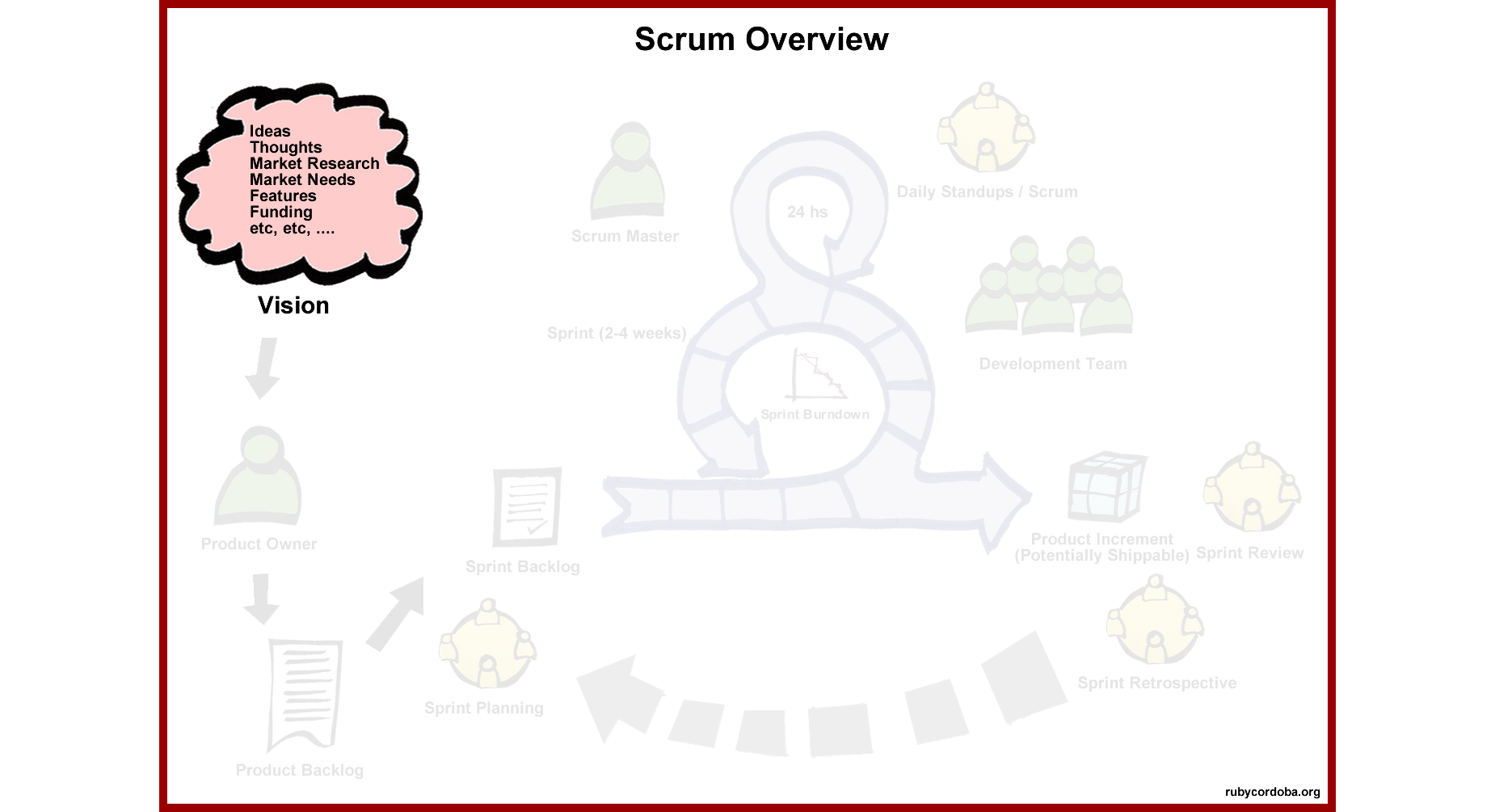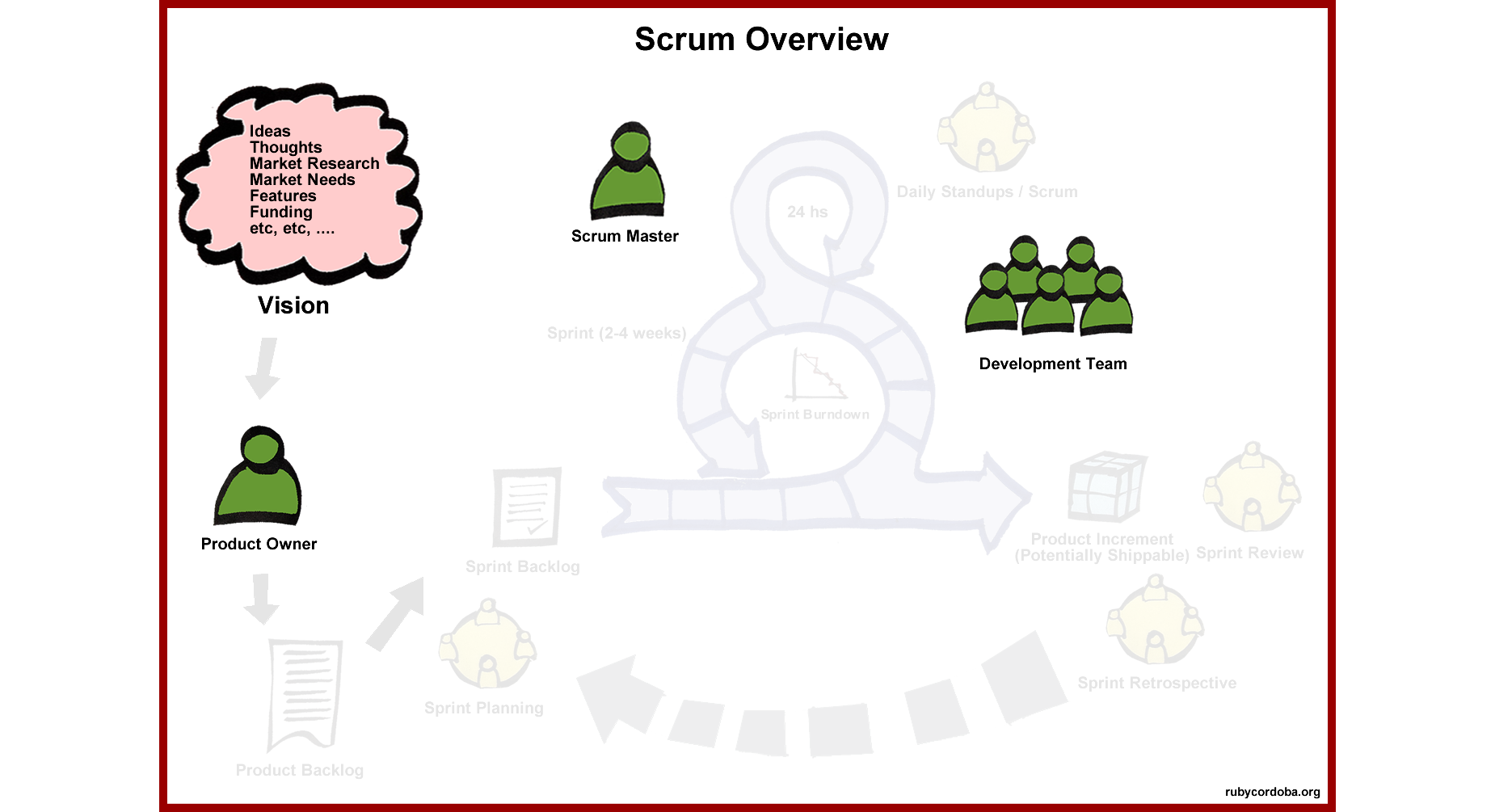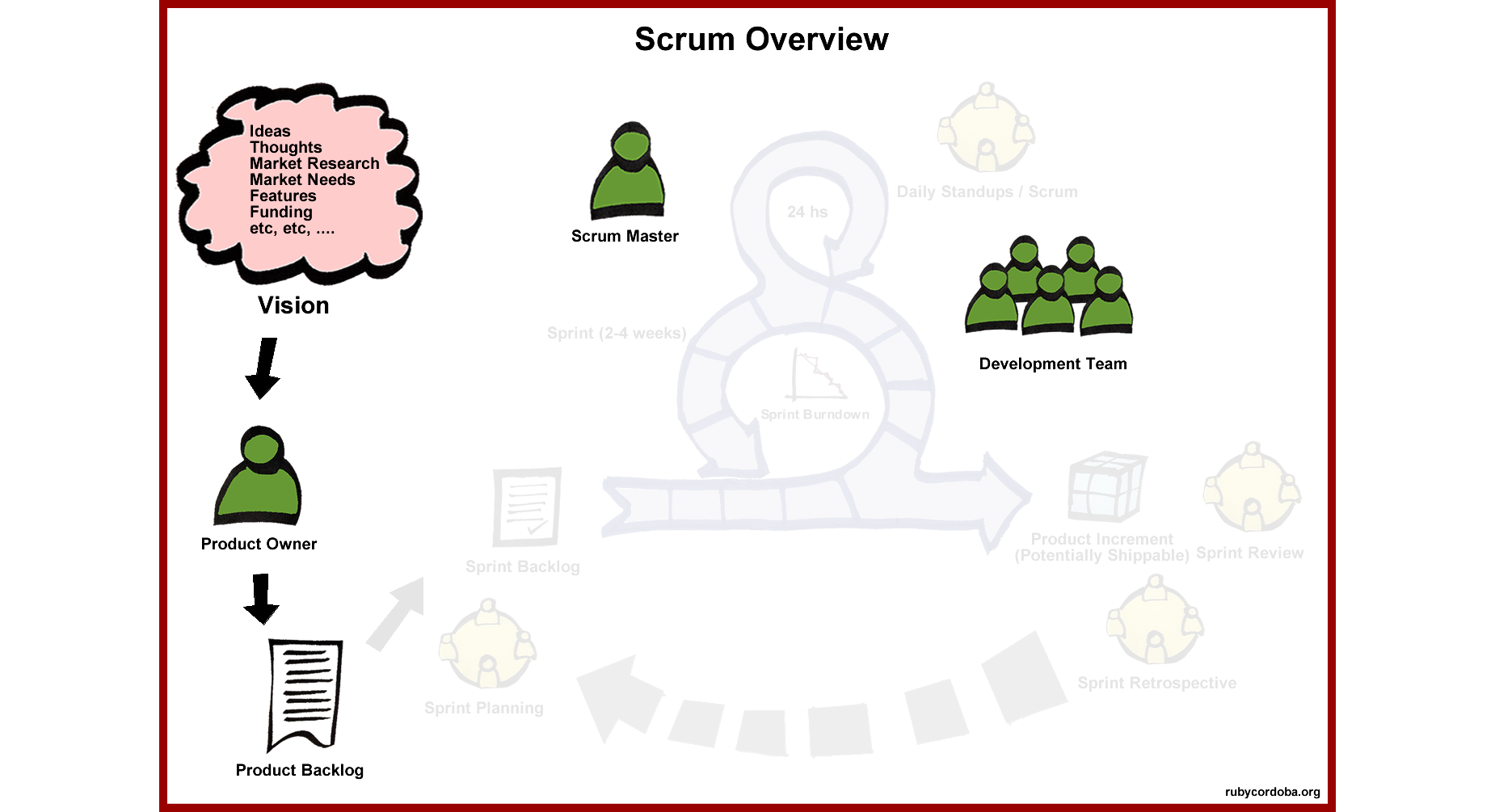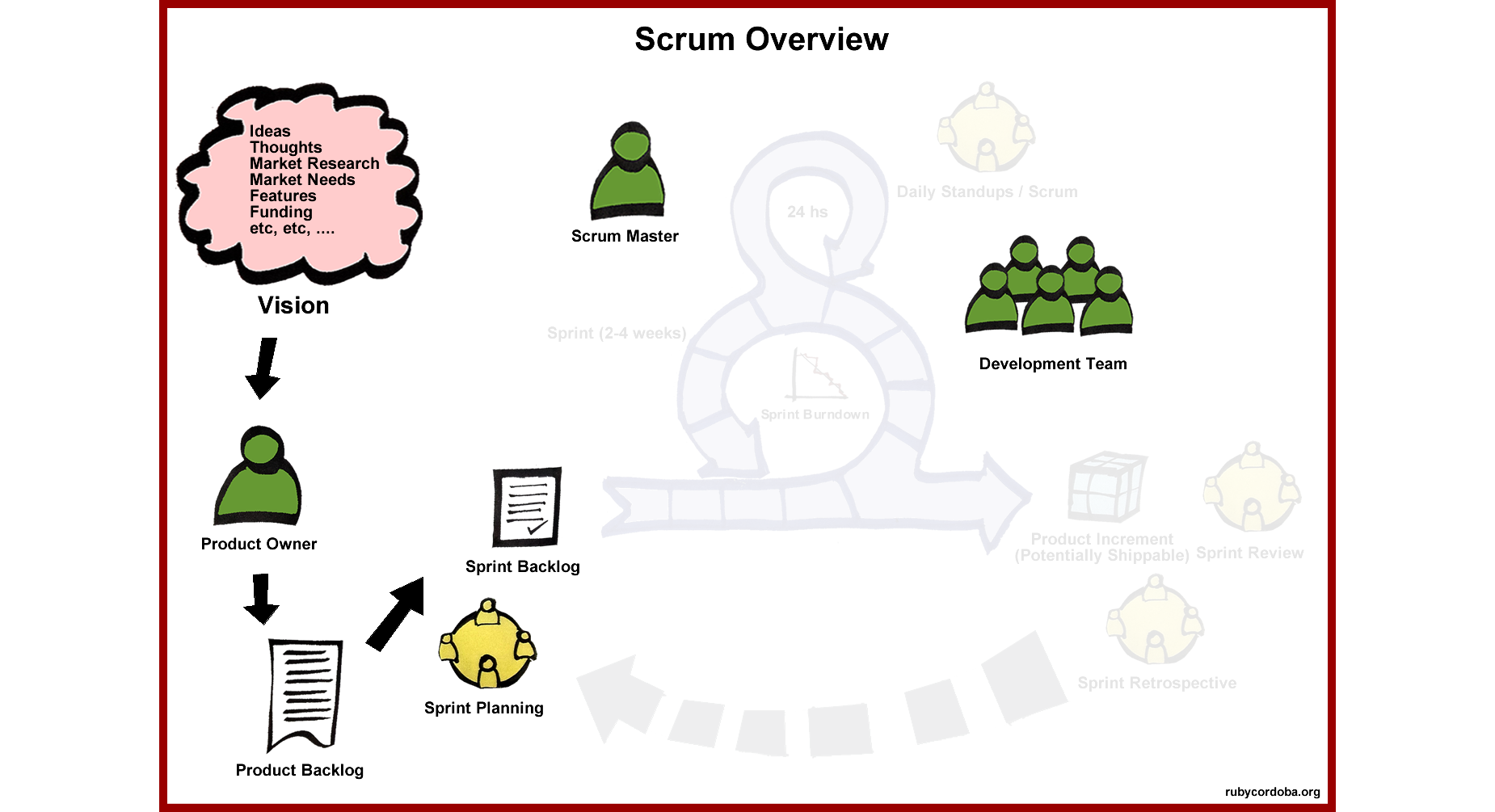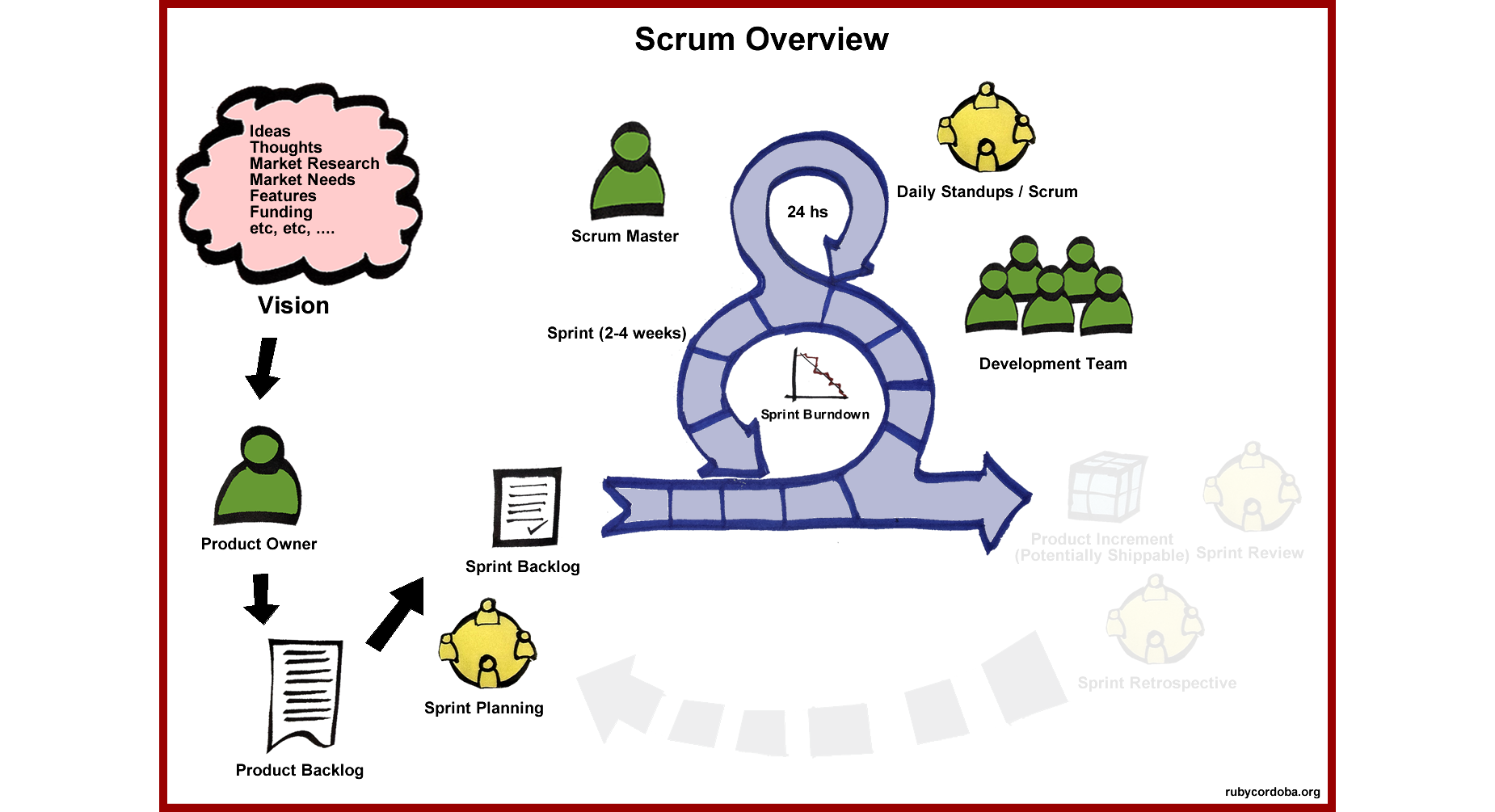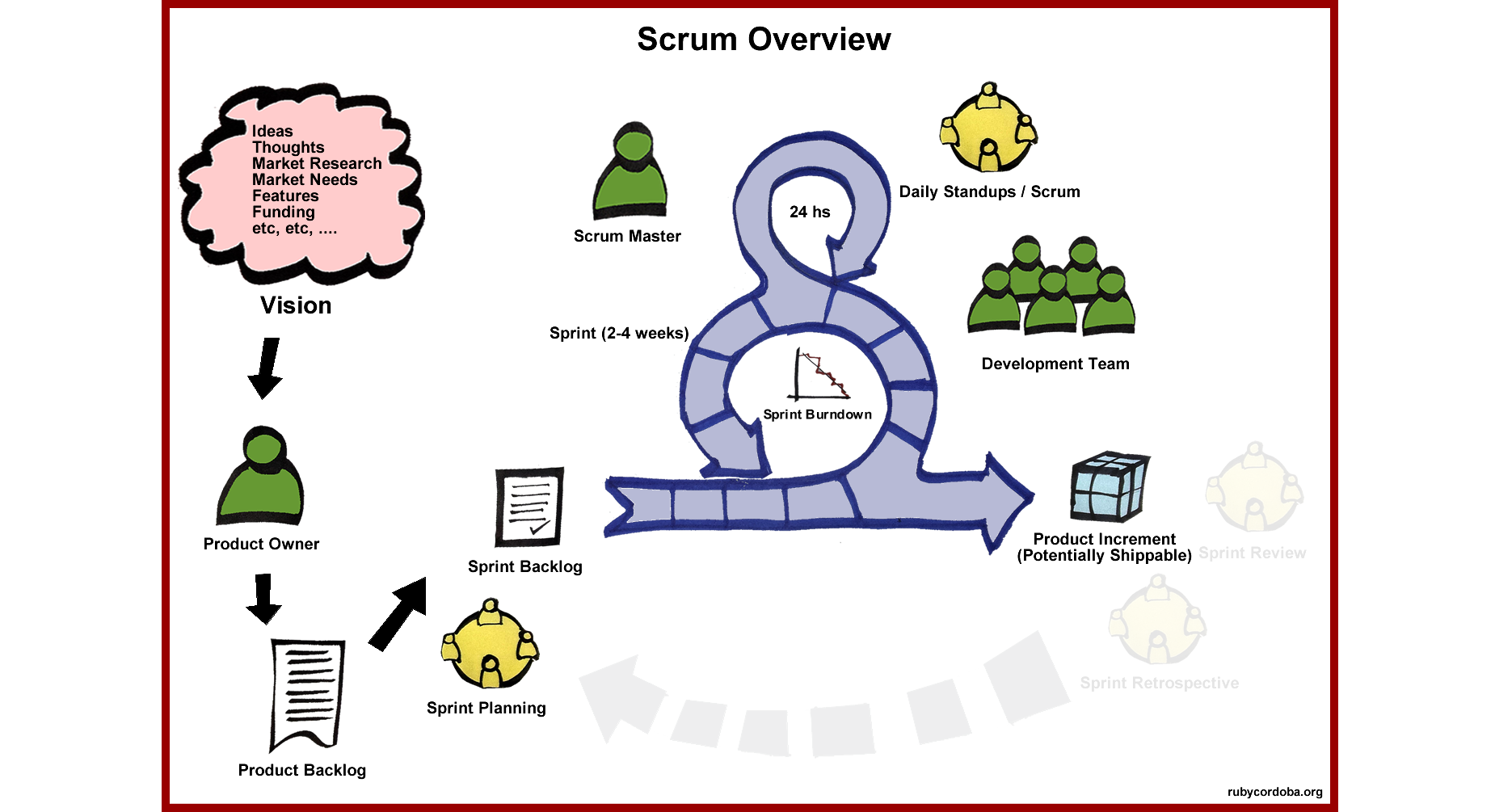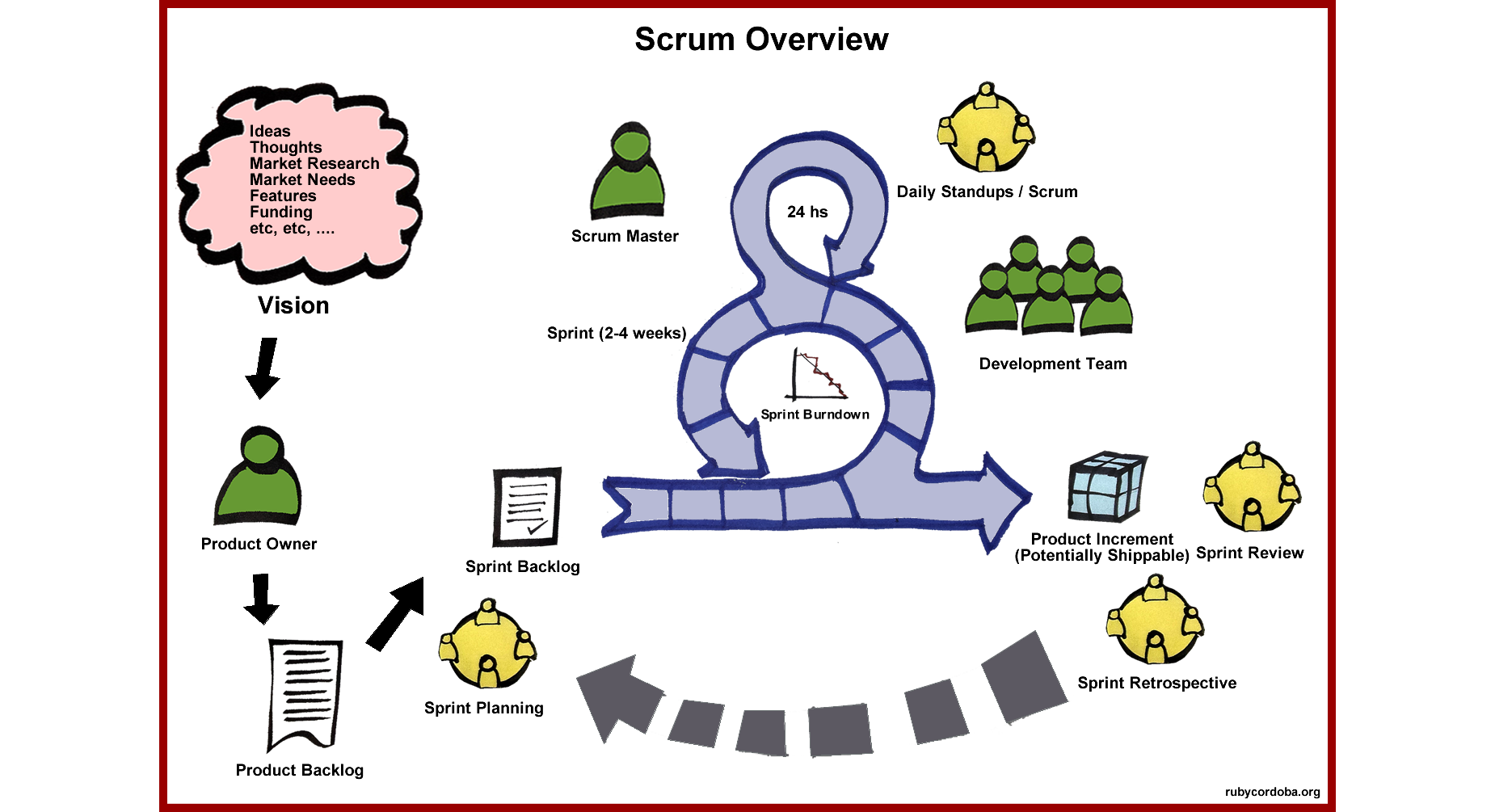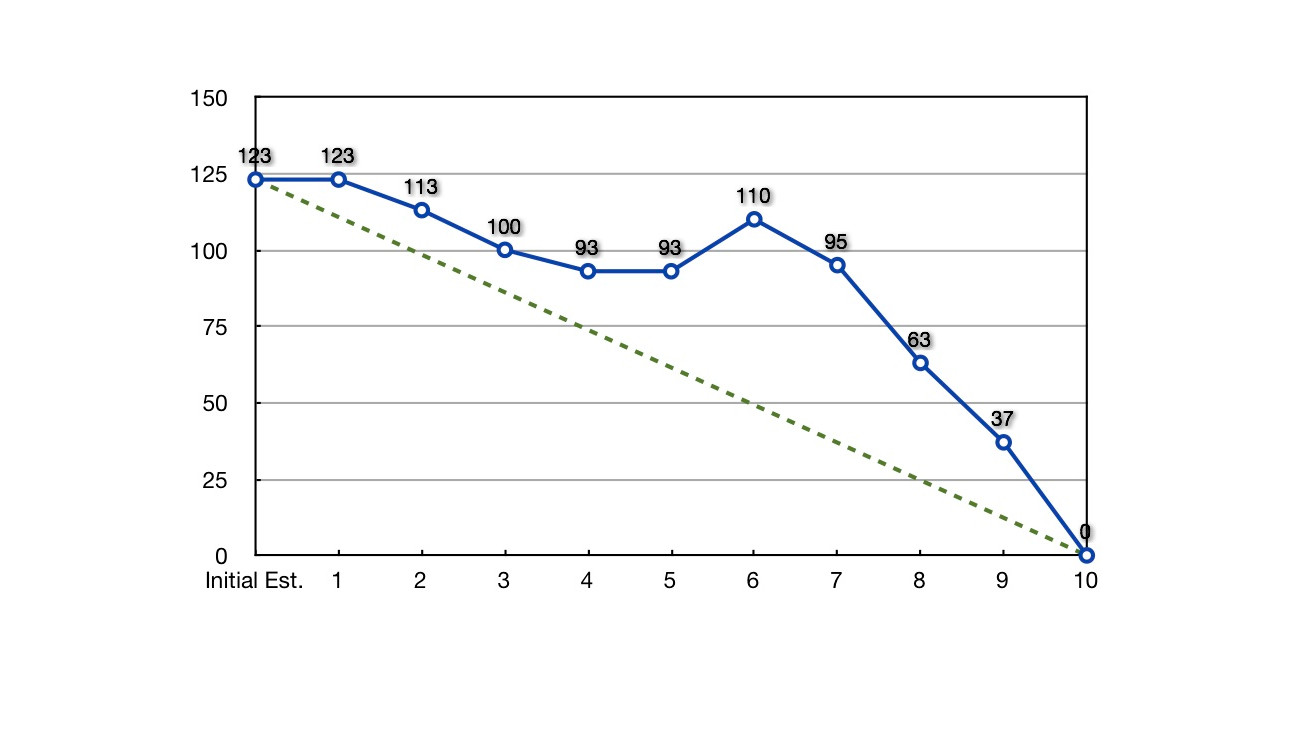SCRUM
by Sebastian Pereyro
Ruby Cordoba - Nov, 2012
If I'm not having fun
I'm not doing it right
Idea
Talk about Scrum using Scrum...
The Plan
1 Sprint
5 Features
Digital Board
The Features
- Feature 1: Why Scrum? (10 min)
- Feature 2: The Basics (10 min)
- Feature 3: Plan Releases & Sprints (10 min)
- Feature 4: Sprint Execution (10 min)
- Feature 5: Final Thoughts (10 min)
4 Values
- Individuals and interactions over processes and tools
- Completed functionality over comprehensive documentation
- Customer collaboration over contract negotiation
- Responding to change over following a plan
While there is value in the items on the right, the items on the left matter more.
1993 - Jeff Sutherland implemented it.
1995 - Ken Schawber formalized it.
Say Hi!

Scrum Definition
A development framework based on empirical process control wherein cross functional, self organizing teams deliver working software every thirty days (or less).
Process Control Approaches
Empirical vs Defined
Empirical Process
Exercises control through frequent inspection and adaptation for processes that
Are imperfectly defined and generate unpredictable and unrepeatable outputs.
Defined Process in Software Development
For many years, SW Dev methodologies have been based on the defined process control model.
But SW Dev, isn’t a process that generates the same output every time given a certain input.
SCRUM is a cool set of tricks
SHU
Hold, Abide, Defend
(Learn by the book)
HA
Break
(Try new stuff, improve)
RI
Leave, Depart, Fly
(Trascend, become one with the spirit, see the matrix, become NEO)
Framework
1 Product Vision
3 Roles
4 Meetings
3 Artifacts
Product Backlog (Rules)
- List of everything we want the team to work on
- Includes user facing features, architectural work, defects, etc.
- Cannot have multiple Product Backlogs for the same team
- Can have multiple teams pull from same Product Backlog
- Prioritized (or ordered) from 1-n
- Priority is owned by the Product Owner
- Flexible: items can be added/removed/edited at any time
- Only items in the current sprint are locked down
Product Backlog (In Practice)
- Items at the top of the backlog have been refined and are at a higher level of detail than lower priority items
- Multiple stakeholders contribute items, including team members
- User-facing items are written as valuable User Stories
- Product Backlog Items are estimated by the team. Current agile practice: Many teams use “Story Points” or some similar method to provide a relative size estimate, vs. a time estimate
Product Backlog (More to Consider)
- Product Backlog is regularly updated and refined. Current agile practice: Many Product Owners meet weekly with the team to refine the backlog
- Refinement includes activities like decomposing large items into smaller ones using a “vertical slice” approach, estimating items, and getting consensus on acceptance criteria
- Supplemented by other artifacts that help provide context (like Product Vision, Road Map, Story Map)
Feature 3
Plan Releases & Sprints
Estimation Accuracy
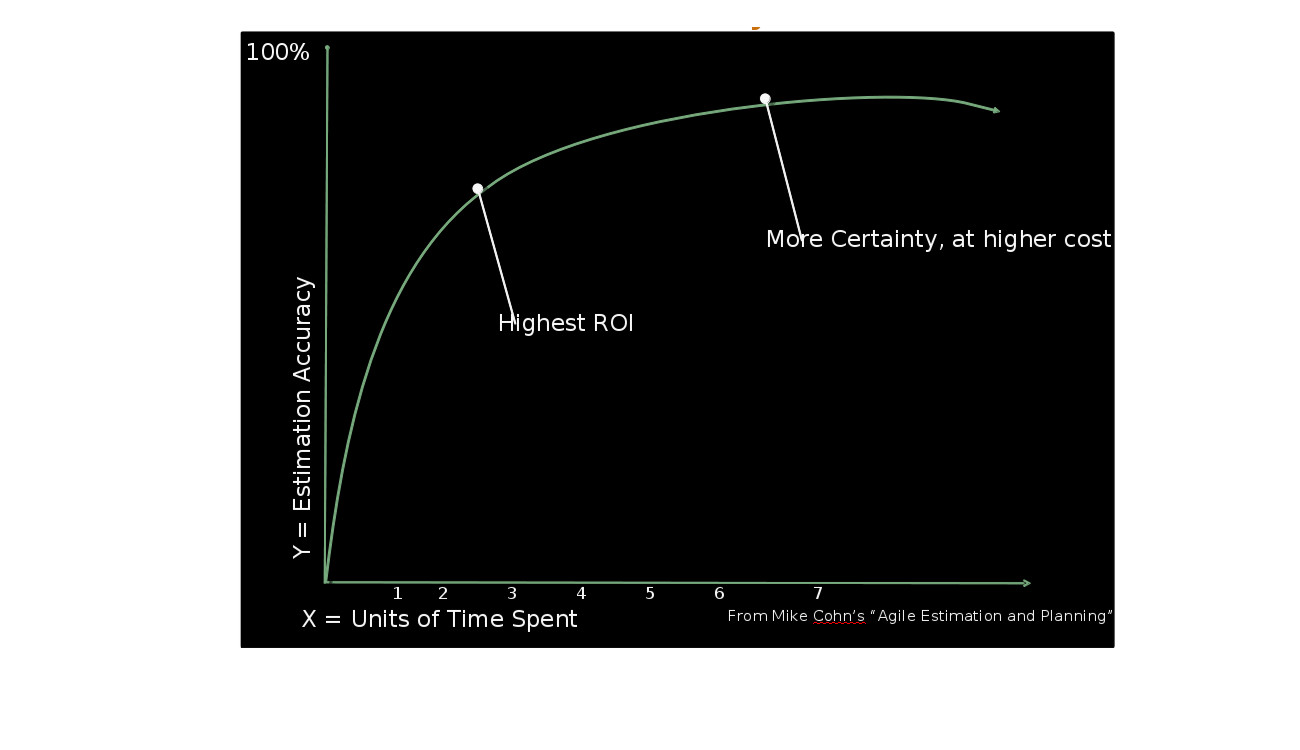
2 Level of Planning
Release Planning
Enable product level decisions such as scope, release date, resources required
Sprint Planning
Enable the scrum team to commit to a specific set of work for a given sprint
We are better at estimating size, not time.
Good at none :P
Agile Estimation Rule
Estimate size, derive time
Affinity
Smaller items to the left, bigger to the right in relation to each other
Affinity values
xs, s, m, l, xl
0,1,2,3,5,8,13,20,40,100,?,fernet
Affinity in practice
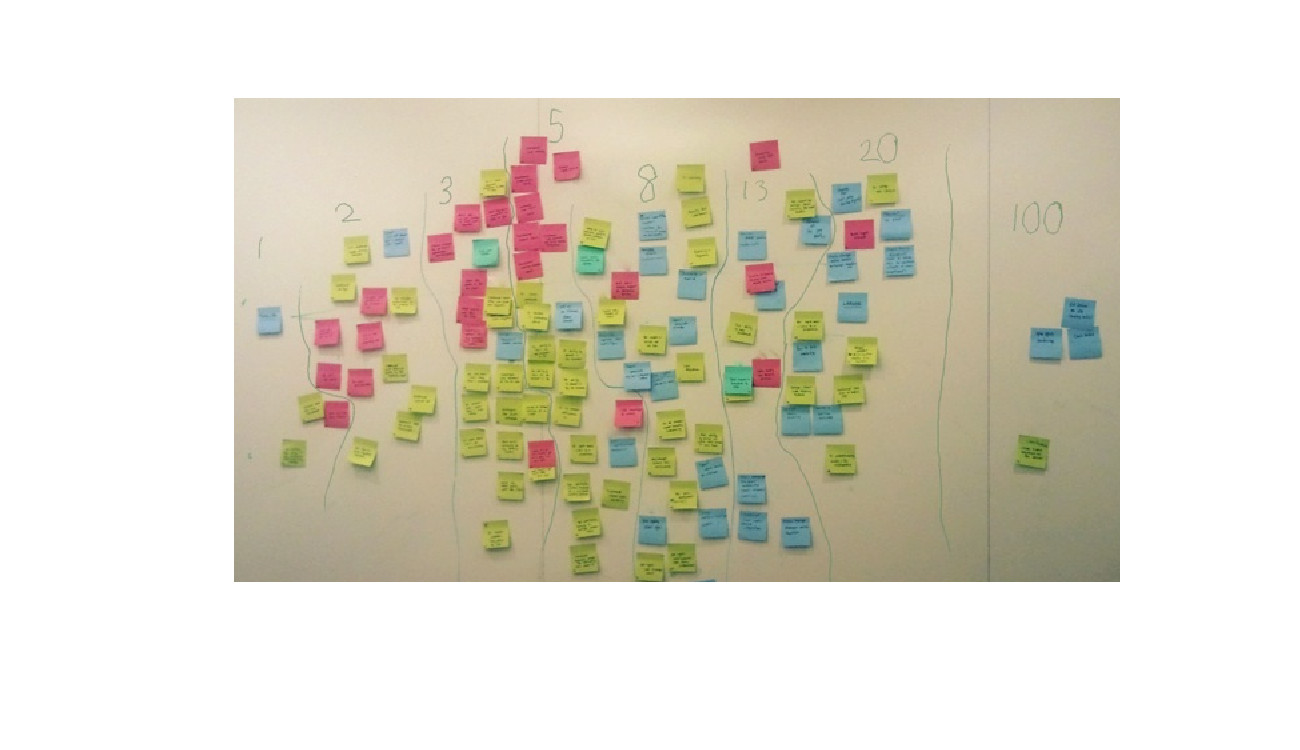
Poker Planning
- Iterative, team based approach
- Each estimator has a deck of cards with potential estimates based on a set.
- Product Owner reads a backlog item, brief clarifying discussion occurs
- Estimators choose a card indicating their estimate
- Cards are revealed all at once. Differences are discussed, especially outliers
- Re-vote until estimates converge
Sprint Planning
- Timebox: 2 hours per week of sprint
- Arrive at a commitment to a sprint goal or set of Product Backlog Items (PBIs) to be completed
- Facilitated by Scrum Master
- Product Owner provides details on PBIs and Priority
- Team creates a plan to deliver as much value as possible while meeting the Definition of Done
Definition of Done
I am done when...
Definition of Done
- The quality bar each Product Backlog Item must pass
- Whatever the team agrees that EVERY Product Backlog Item must go through to be considered done, potentially releasable software.
- A good definition of done should:
- Be attainable without assistance from outside of the team
- Not include items such as “QE signed off”
Definition of Done (Sample)
- Every check-in has formal code review and feedback integrated
- If story marked as “risky”, used pair programming
- Unit Tests all passing
- Code checked into main
- Tested using pseudo -translation build
- No open bugs for user story. (Bugs are fixed or closed).
- All acceptance tests passing.
Feature 4
Sprint execution
The Sprint: Rules
- Product Owner can’t add new items to the sprint once Sprint Planning is complete
- Product Owner can Abnormally Terminate a sprint in the case of an urgent issue. This should be rare for most products.
Zero Day security problem/bug
Major, urgent revenue opportunity
Major market shift
- Team can’t extend the length of the sprint in order to finish items
Sprint Burndown Chart
- Simple tool used by the Team to provide
- a measurement on how close they are to meeting the Sprint Goal
- by the end of the Sprint
Daily Scrums
Coordination, synchronization for team
Three Questions
- What have you done?
- What will you do?
- What’s slowing you down? (impediments)
Sprint Review
- Timebox: 1 Hour per week of sprint
- Inspect and Adapt the Product
- Collaborative discussion of what was built
- Informal
- No slides
- Minimal prep
- Whole team participates
- Invite the world
Sprint Retrospective
- Timebox: 1 Hour per week of sprint
- “Inspect” process
- Regular opportunity to improve the system
- Done after every sprint
- Whole team participates
- Choose one specific change to make for next sprint
Feature 5
Share Some Thoughts
Easy to learn, hard to master (like ruby?)
Team Collaboration
Inspect & Adapt
Self managed
Proactive approach
Scrum + XP (Continuous integration, pair programming, TDD, Refactoring, etc)
←
→
#
/



